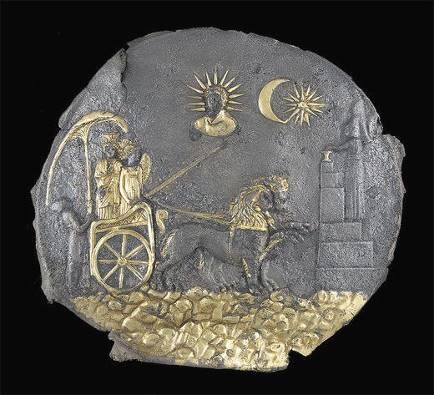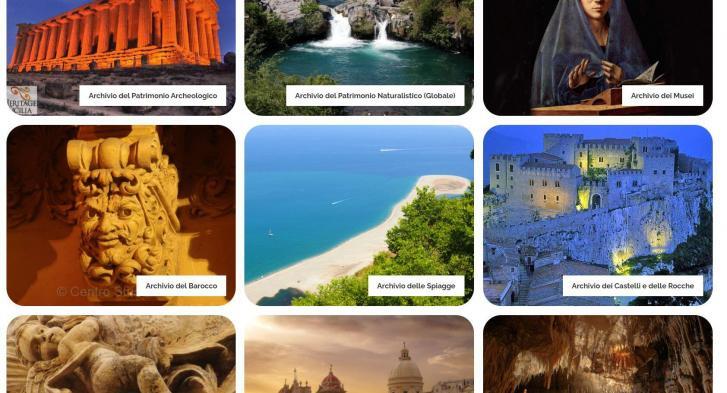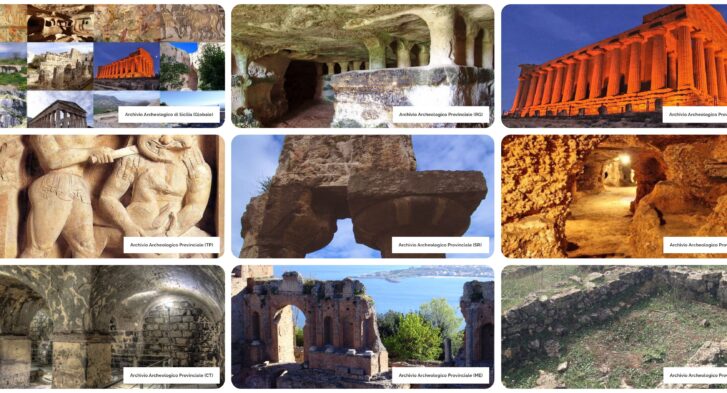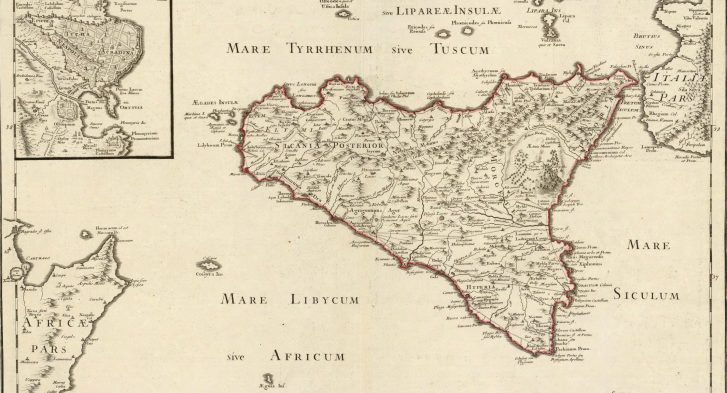Cybele
Reference page: Repertory of Cults and Myths
Origins of the Myth
Originally, the deity was worshiped by the peoples of Asia Minor, in Phrygia. Known as "Great Mother" and also "Mother of the mountains“, His cult was later adopted by the Hellenes, who arrived in Asia Minor, then spreading quickly throughout Greece.
Cybele was particularly venerated on Mount Ida (today's Kaz Dag in Turkey), which is why it also took the name of "Mother Idea".
Originally it was considered a deity of the mountains, given the names that were attributed to it.

Plaque of Cybele (Afghanistan, Aï Khanoum, sanctuary of the cell temple (XNUMXrd century BC)
A certain relationship must have existed with an ancient Cretan deity called "Lady of the beasts“, depicted on top of a mountain and flanked by two lions. Indeed, a statue of Cybele of the second century. depicting the goddess seated on a throne, with her head crowned by towers and with two lions on either side of the throne, is kept in the National Archaeological Museum of Naples.
The towers of the walls, which often crowned the head of Cybele, reveal that the goddess was also seen as a wandering and founding deity of cities and castles.
The main characteristics of Cybele were those of universal mother, goddess of the earth, protector of agriculture and vegetation; these characteristics meant that the cult of Cybele was confused with that of Sale, of Gea, of Demeter and, in some way, also with that of the Egyptian Isis. Isis too is seen as the mother of the gods, and with these qualities despite being an Egyptian goddess, her cult spread to the Greco-Roman world, where she was often compared to Demeter. It was around Isis that female divinities were formed towards the second century. AD, the religious syncretism
The cult that the priests dedicated to Cybele was defined by the Greeks as orgiastic, it was bloody, associated with amazing music and often accompanied by voluntary injuries and self-emasculation. The Hellenization of the cult, as it happened for that of Baal e Tanit, led to a purge of the wildest manifestations. Particularly bloody forms continued to survive within the mystery ceremonies involving the goddess. Cybele's priests were eunuchs and the initiation rite they had to undergo to enter the service of the goddess consisted of self-emasculation, which they performed in the grip of delirious ecstasy [John Ferguson: The religions of the Roman Empire p. 16].
The Myth in Sicily
Cicero speaks of the cult of Cybele in Sicily (Verrine IV.97). He recounts that Scipio gave bronze armor and helmets to the temple of the Great Mother in Engio, after having had his name engraved on it. It is probable that other goddesses were also venerated in Engio, often connected to the cult of Cybele. Diodorus Siculus also speaks of it (lib. IV.79) regarding a temple "at the Mothers" built by the Cretans who landed in Sicily after the defeat of Troy. The locality of Engio has not been located with certainty, we want to think of the current Nicosia
Traces of the cult of this goddess can be found in Piazza Armerina, in the Villa del Casale, where the statue of Cybele is portrayed in a mosaic depicting a circus race.
Ad Akray there are the so-called santons, a series of rock sculptures lined up along a rocky wall: almost all the 12 reliefs represent scenes in which the goddess Cybele appears in various positions.
A SIRACUSA there is an area similar to that of the holy men of Akray. In Fusco, not far from the British military cemetery, on a rock face, there is a relief in which Cybele is represented on a throne with the inevitable lions next to her. Furthermore, a Greek sculpture always representing Cybele on the throne between two lions, this time located inside an aedicule, is kept in the Regional Archaeological Museum of Syracuse.
Religious syncretism
The advent of the Christian religion meant that, in the syncretic context of the "great mothers", the cult of Madonna partially absorbed some of Cybele's characteristics. An example was the feast of the Assumption in Messina, on August 15, where two very large statues, called the Giant and the Giantess, were carried in procession by the population. Some writers of the past have called these statues Cam and Rea, others Saturn and Cybele, or Zancle and Rea and also Grifone and Mata. The latter name has sometimes been transmuted into Mother, perhaps by mistake or perhaps because both Rhea and Cybele were actually seen as mothers; in fact, Cam and Rea were considered by the population as ancestors. The Giant and the Giantess were dressed as warriors, both on horseback, the Giantess had on her head a turreted crown similar to the one with which Cybele was often depicted [Giuseppe Pitrè: Feste Patronali in Sicilia p. 149].

Mata and Grifone
The Myth in the IWB Register of the Sicily Region
The places of the myth of Cybele have been included in the regional map of places and identity and memory (Places of myth and legends).
Places indicated in the IWB register of the Sicily Region (Places of Identity and Memory):
- Santoni of Akrai (Palazzolo Acreide)
Extract from the Book ” Cults of Ancient Sicily” by Ignazio Caloggero ISBN: 9788832060102 © 2022 Centro Studi Helios srl







